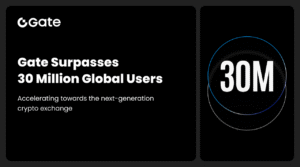In recent years, new technologies such as blockchain and cryptocurrency have disrupted the finance world. Decentralized Finance (DeFi) and Central Bank Digital Currencies (CBDCs) are two of the most prominent innovations in this space. Both offer a new way of managing financial transactions but differ in several ways. In this article, we will explore DeFi and CBDCs, their similarities, differences, and the potential implications of their adoption.
What is DeFi?
DeFi is a term used to describe a decentralized financial system built on blockchain technology. It operates without the involvement of intermediaries like banks, clearinghouses, or brokers. Instead, DeFi uses smart contracts, which are self-executing contracts that automate the process of financial transactions. These smart contracts are built on blockchain technology, which provides a secure and transparent platform for financial transactions.
DeFi is built on top of public blockchains like Ethereum, which allows for the creation of decentralized applications (dApps) that can be used to exchange value, lend and borrow money, and even create new financial instruments. DeFi has the potential to make financial services more accessible to people around the world, particularly those who do not have access to traditional banking services.
What are CBDCs?
CBDCs are digital currencies issued by central banks. They are digital versions of the fiat currency issued by central banks, such as the US dollar or the euro. CBDCs are designed to provide the benefits of digital currencies while maintaining the stability and security of traditional currencies. They differ from cryptocurrencies like Bitcoin because they are backed by the government and operate within a centralized system.
CBDCs are being developed by central banks around the world, with some countries already piloting CBDC projects. The People’s Bank of China is one of the most advanced in this area, with its digital yuan project already used by millions of Chinese citizens.
Similarities between DeFi and CBDCs
Despite their differences, DeFi and CBDCs share some similarities. Both digital financial systems aim to provide users with more accessible and efficient financial services. They both use blockchain technology to facilitate financial transactions, providing a secure and transparent platform.
Both DeFi and CBDCs also have the potential to increase financial inclusion. DeFi can provide financial services to people who are excluded from traditional banking services, while CBDCs can provide access to digital currencies to people who do not have access to traditional banking services.
Differences between DeFi and CBDCs
Despite their similarities, DeFi and CBDCs differ in several key ways. First and foremost, DeFi is a decentralized financial system, while CBDCs are centralized. In a DeFi system, there is no central authority controlling the system. Transactions are validated and processed by the network of users who participate in the system. In contrast, CBDCs are controlled by central banks, which have the authority to issue and regulate the currency.
Another difference between DeFi and CBDCs is their level of accessibility. DeFi is accessible to anyone with an internet connection, while CBDCs are only accessible to those who are authorized to use them. Central banks have the authority to control who can access and use CBDCs, which means that they can limit the accessibility of these currencies.
Implications of DeFi and CBDCs adoption
Adopting DeFi and CBDCs could have significant implications for the global financial system. DeFi can potentially disrupt the traditional financial system by providing an alternative to traditional financial services. It could make financial services more accessible to people around the world, particularly those who do not have access to traditional banking services.
However, the adoption of DeFi could also lead to regulatory challenges. Without the involvement of intermediaries like banks and brokers, it may be difficult for governments to regulate and monitor financial transactions. This could potentially lead to increased risks of money laundering and terrorist financing.
Adopting CBDCs could also have significant implications for the global financial system. CBDCs could potentially make cross-border transactions more efficient and less expensive, eliminating the need for intermediaries and reducing the time and cost of settlement.
CBDCs could also provide greater financial inclusion, particularly in countries with limited access to traditional banking services. In these countries, CBDCs could provide a way for people to access digital currencies and participate in the global financial system.
However, the adoption of CBDCs could also lead to potential privacy concerns. With CBDCs, central banks would have access to detailed information about users’ financial transactions. This could potentially lead to surveillance and monitoring of individuals’ financial activities.
Conclusion
DeFi and CBDCs are two innovative technologies that are transforming the financial landscape. Both offer new ways of managing financial transactions but differ in several key ways. DeFi is a decentralized financial system that operates without intermediaries, while CBDCs are digital currencies issued by central banks.
Despite their differences, both DeFi and CBDCs have the potential to increase financial inclusion and make financial services more accessible to people around the world. Adopting these technologies could have significant implications for the global financial system but could also lead to regulatory and privacy concerns.
As these technologies continue to develop and gain adoption, it will be important for regulators and policymakers to carefully consider the potential risks and benefits of these new financial systems. Only then can they develop effective policies and regulations that promote financial innovation while protecting consumers and maintaining financial stability.






